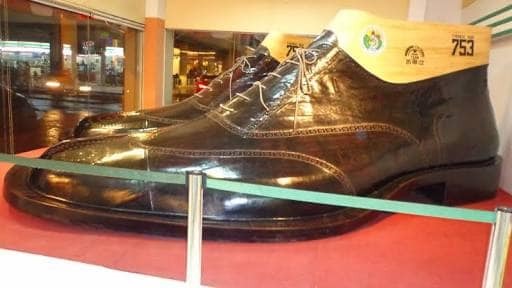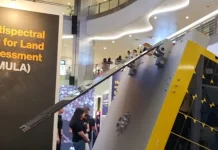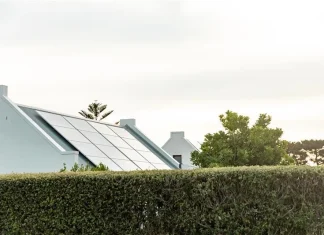
Marikina has withstood the ravages of time, modernization, foreign shoe markets and disasters – continuing to survive as the nation’s shoe capital.
Marikina’s history of becoming the Philippines’ shoe capital begins a long way from Filipino ancestry. From an agricultural farm town, Marikina transformed into a multi-awarded and highly urbanized city with a progressive shoemaking industry.
It all started when community leader Don Laureano Guevarra locally known as “Kapitan Moy” and his workers took time to disassemble, study the components and successfully reassembled his worn-out pair of British shoes in 1887.
Kapitan Moy realized shoemaking can provide an alternative source of livelihood for Marikineos leading him to teach villagers shoemaking skills, hence earning his title as the Father of the Shoe Industry.
In the 20th century shoemaking craftsmanship combined with heavy machinery made shoe manufacturing a multi-million-peso industry earning Marikina a title as the “Shoe Capital of the Philippines.”
Technological advancements, craftsmen and foreign shoe imports are the challenges faced by Marikina’s shoe industry up to today but the city is armed with ideas and plans to keep-up with the pace of the ever changing times.
The city opened its Shoe Museum in 2001 to preserve the culture and identity of the city and its shoemakers through series of displayed life-size mannequin crafting shoes. It also houses the shoes of prominent shoes of personalities as well as collection of traditional shoes from around the world.
The museum aims to revive the slowly fading tradition of passing the skill of shoemaking to the succeeding generation.
In 2002 Marikina was recognized by the Guinness Book of World Records as it crafted the world’s largest pair of shoes made from genuine leather, built in 77 days and costing more than two million pesos.
Marikina celebrates its annual “Sapatos Festival” every November to January and features sales and expositions of Marikina’s finest shoes, clothing and accessories plus the anticipated “Tour de Takong” or stiletto race.
Preserving culture boosts the morale of the city’s manufacturers and brings technology and craftsmen closer together to help Marikina’s shoemakers rise above foreign players entering the Philippine market such as China, Indonesia, Vietnam, and Thailand.
The number of Marikina shoe manufacturers from the last two decades reached as high as 3,000 but significantly dropped to 300 in 2015.
One of the causes of the decline is traced to large importation of China-made shoes that led to higher pricing of local shoes, plus the proliferation of inferior quality shoes stamped with “Made in Marikina” that damaged the reputation of local shoemakers.
Another reason cited is that shoemakers need more sophisticated mass-production machinery to increase their production output.
Marikina now sees the silver lining as efforts to further revive the former glory of the industry are materializing as initiatives and projects are offered to the shoemakers.
Recently the Department of Trade and Industry launched the facility named Shared Service Facilities with the Philippine Footwear Federation Inc. housing common-service facilities with efficient machines and equipment for production of shoes, alongside the Philippine Footwear Academy serving as the first and only footwear school in the ASEAN oriented towards training future shoemakers and leaders.
Support for MSME’s is now given an emphasis through assistance in finances, training and even designs from the private sectors and the government. Moreover, online influencers and ordinary netizens are taking part in reviving the vibrance of the industry as encouragement on patronizing Marikina-made footwear and apparel are constantly posted online, garnering thousands of support and actual visits in the shoe shops of Marikina.
Marikina’s success story showcases how Filipinos are naturally-born patriots and achievers, raising the Philippine flag in all corners of the world. Making Marikina’s shoe industry vibrant again is not just an advocacy of the shoemakers and the city’s citizens but also for all Filipinos who are called on to love local products more and help their producers make their products better.










